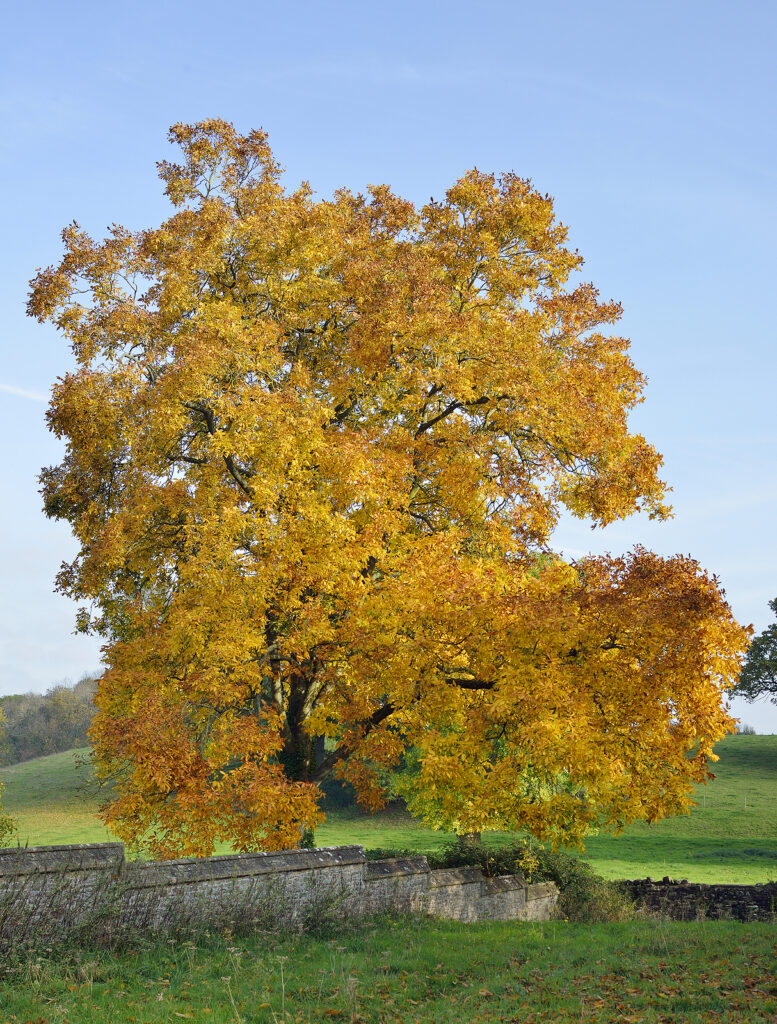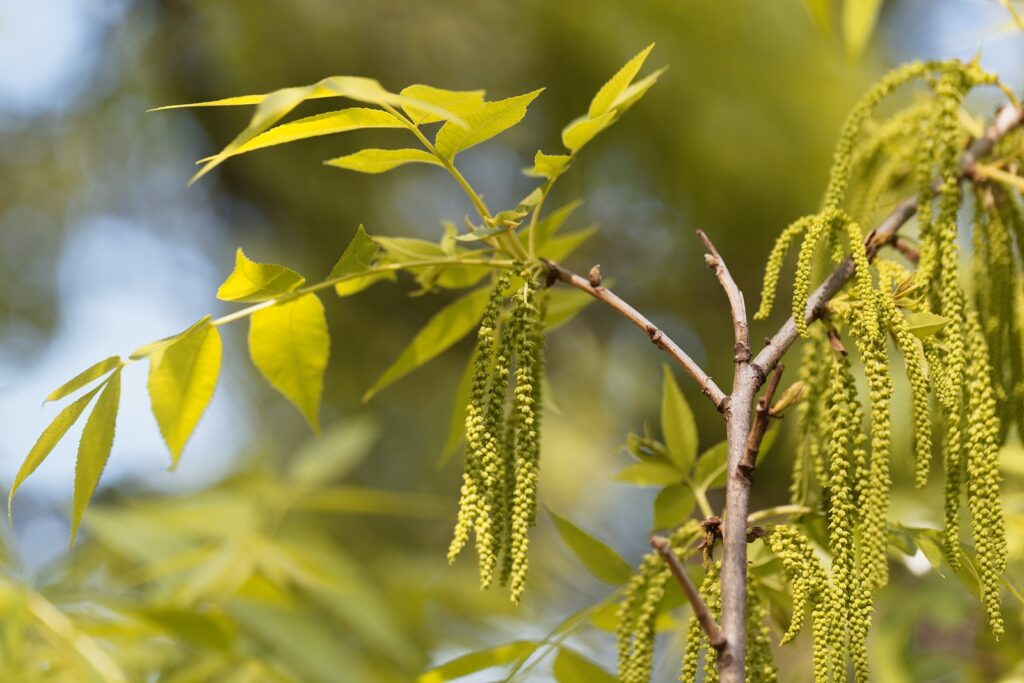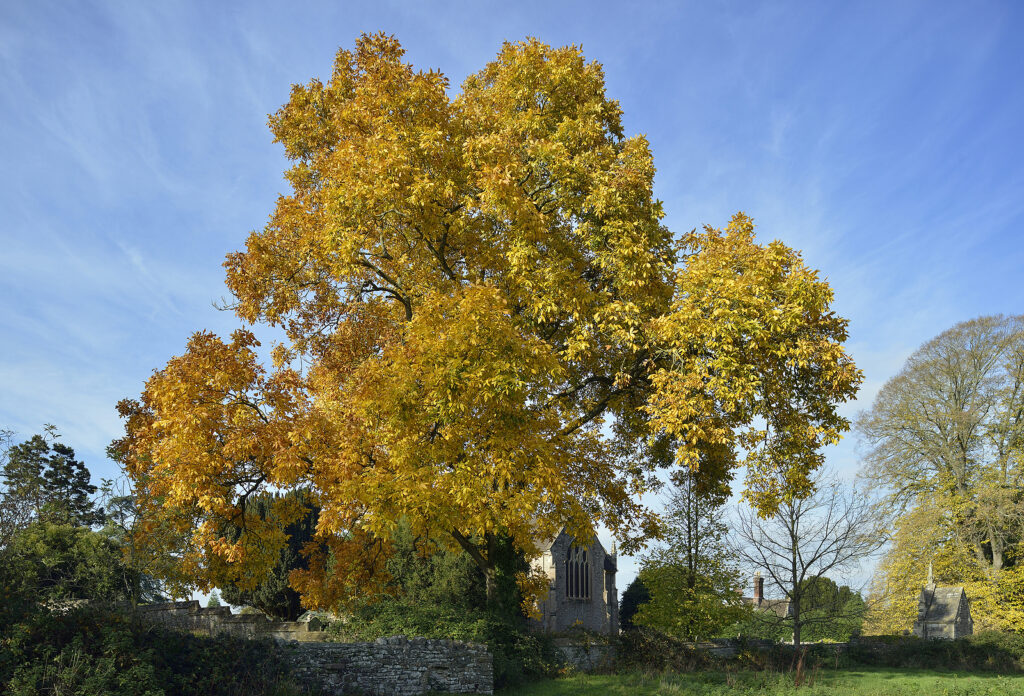Trees of the genus Carya which include hickory and pecan trees are fast-growing deciduous trees. They grow from 60 to 100 feet (18-30m) tall and live for more than 100 years.
Carya trees have slender, upright gray trunks with rounded to conical crowns. Most have deep and wide-spreading roots. They are well suited for large lawns, park-like locations, and woodlands. Hickories and pecan attract wildlife.
Leaves are large and pinnately compound. Flowers are slender catkins that develop in spring along with the leaves.

Get to know Carya
- Plant type: Deciduous tree
- Growing zones and range: Zones 4 to 8
- Hardiness: Cold-winter hardy
- Height and width: 80 to 100 feet (25-30m) tall and 50 to 70 feet (15-20m) wide
- Foliage: Pinnate, divided feathery leaves, many leaflets
- Flowers: Inconspicuous greenish-yellow catkin flowers followed by nuts enclosed in husks
- Bloom time: Spring
- Uses: Trees are too large for smaller yards
- Common name: Hickory, pecan
- Botanical name: Carya
- Family name: Juglandaceae
- Origin: North and Central America and Asia
Where to plant Carya
- Plant hickory and pecan in full sun.
- Plant in humus-rich, well-drained soil.
- Trees develop deep taproots and should be planted while young and not moved later.
- Carya trees may live up to 100 years.

When to plant Carya
- Set container-grown Carya trees in the garden in spring or autumn.
Planting and spacing Carya
- Space Carya 50 to 70 feet (15-20m) apart depending on the variety.
How to water and feed Carya
- Carya needs regular watering.
- Fertilize trees with an all-purpose fertilizer in spring.
- Prune Carya in late winter before spring growth begins; prune out dead, diseased, and crossing branches.

Carya care
- Mulch around Carya to keep weeds down and conserve soil moisture.
Carya pests and diseases
- Carya is prone to a wide variety of fungal leaf spots including blight.
- Powdery mildew, crown gall, and catkin blight can occur.
Carya propagation
- Sow seed where you want the tree to grow.
- If the seed is started in a seedbed, it should be transplanted to the permanent location as soon as possible; Carya does not like transplanting.
- Cultivars can be grafted in winter.
Carya varieties to grow
- Carya cordiformis, swamp hickory: Broadly columnar tree grows to 80 feet tall and 50 feet wide; mid-green pinnate leaves.
- C. glabra, hognut hickory: Spreading tree with furrowed gray bark; grows to 80 feet tall and 70 feet wide; mid-green leaves turn yellow in autumn.
- C. illinoensis, pecan: Grown for nuts but can also be grown as an ornamental; grows to 70 feet tall and wide; foliage similar to English walnuts, narrow leaflets; prune to shape; needs well-drained soil.
- C. ovata, shagbark hickory: Grows 60 to 100 feet tall; has shaggy gray bark; bears sweet hard-shelled nuts; autumn foliage is yellow and brown.



